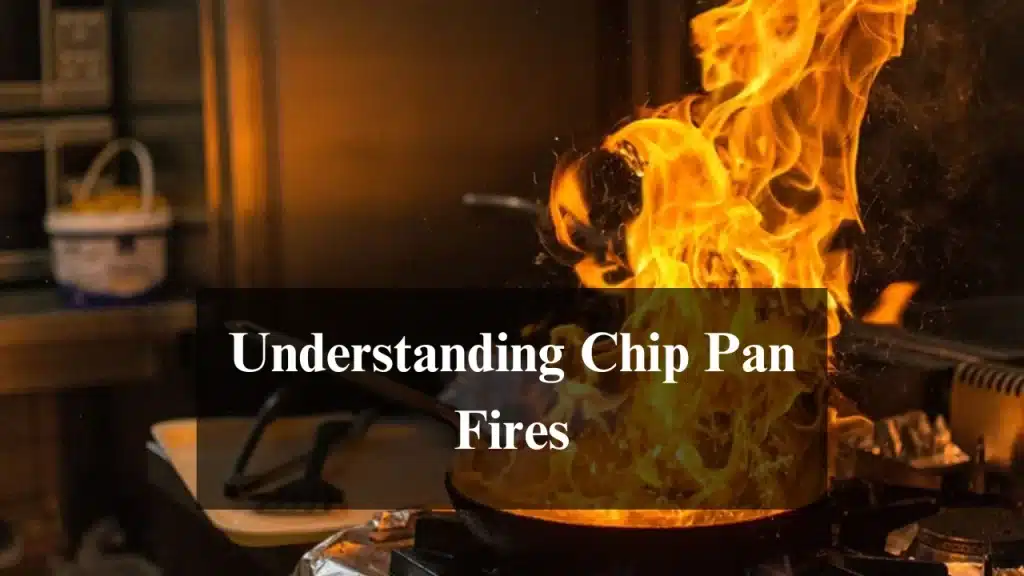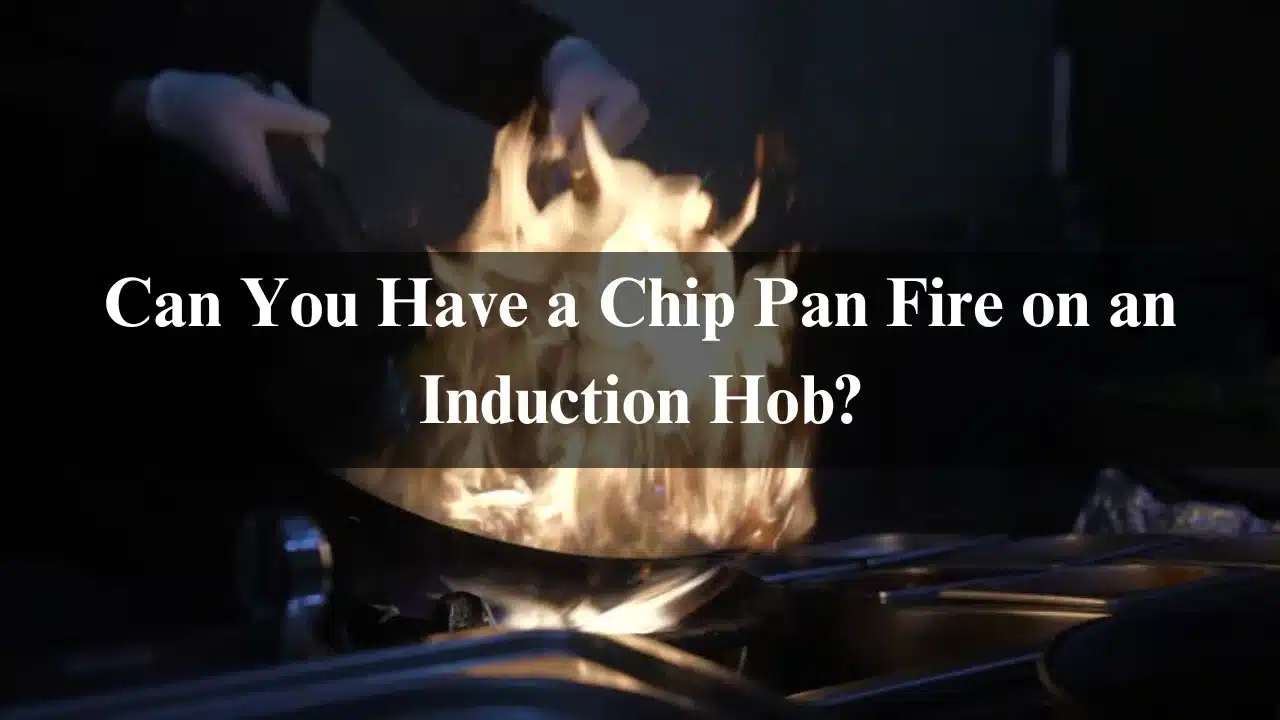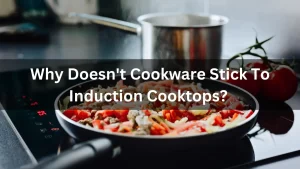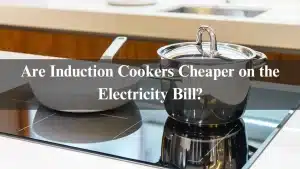Induction hobs are known for their safety and efficiency, but can they entirely prevent chip pan fires? While these hobs lower the risk of fires, understanding their operation and recognizing possible hazards are essential.
Table of Contents
How Induction Hobs Work?
What is an Induction Hob?
An induction hob is a type of cooktop that uses electromagnetic fields to heat cookware directly, bypassing the need for flames or electric coils. This method provides faster heating, greater efficiency, and enhanced safety by keeping the hob surface cool.
How Induction Hobs Generate Heat
An induction hob heats the pan directly through electromagnetic currents, so only the cookware gets hot. The hob surface remains relatively cool, and heating stops as soon as the pan is removed. This rapid heating and cooling process reduces the risk of accidental burns or fires.
Understanding Chip Pan Fires
What Causes a Chip Pan Fire?
Chip pan fires occur when cooking oil overheats. When deep frying, oil typically needs to reach about 350°F (175°C). However, if the oil temperature exceeds its smoke point—generally above 400°F (200°C)—it can ignite. Common causes include unattended cooking, high heat settings, and overfilled pans.

Why Water Is Dangerous in Oil Fires?
Oil fires are highly flammable and react violently to water. Adding water to an oil fire can cause hot oil to splatter and intensify the flames, making the situation more dangerous.
Induction Hobs and Fire Risk
Can Induction Hobs Cause Fires?
Yes, chip pan fires are still possible on induction hobs if the oil overheats. Induction hobs don’t prevent oil from reaching dangerous temperatures—they simply provide precise control over heat. Leaving oil unattended or using excessive heat can still lead to fires.
Why Induction Hobs Reduce Fire Risks?
- No Open Flame: Unlike gas stoves, induction hobs use no open flame, eliminating a primary ignition source.
- Rapid Heat Control: Induction hobs can heat oil quickly and cool down just as fast, making it easier to manage temperature and avoid overheating.
- Automatic Shut-Off Features: Many induction models have safety features, like automatic shut-off if no pan is detected or if the pan is removed from the hob.
Comparing Induction Hobs to Gas and Electric Stoves
| Feature | Induction Hob | Gas Stove | Electric Stove |
| Heat Control | Precise and immediate | Manual, slower response | Less precise |
| Overheating Risk | Lower risk but possible | High risk if unattended | Moderate risk |
| Surface Heat | Cool to the touch | Hot surface, burn risk | Hot surface, burn risk |
| Fire Prevention Features | Automatic shut-off on some models | No automatic shut-off | No automatic shut-off |
| Cooking Speed | Fast and efficient | Slower than induction | Moderate speed |
Induction hobs offer superior safety features compared to traditional gas or electric stoves but still require caution when frying with oil.
Preventing Chip Pan Fires on an Induction Hob
Safe Frying Tips for Induction Hobs
- Use a Thermometer: Monitor oil temperature with a thermometer to ensure it remains below its smoke point.
- Avoid Extended High Heat: Use medium to low heat to maintain safe oil temperatures and prevent overheating.
- Limit Oil Amounts: Avoid overfilling the pan with oil, as this can cause spills and splashes, increasing fire risk.
- Stay Nearby When Frying: Never leave hot oil unattended, even with an induction hob’s safety features.
- Reduce Heat Once Oil is Hot: Once the oil reaches the desired temperature, lower the heat to prevent further heating.
Consider Using a Deep Fryer
For frequent frying, a dedicated deep fryer with a thermostat is safer and maintains more consistent oil temperatures, reducing the risk of fires.
What to Do in Case of a Chip Pan Fire on an Induction Hob?
If a Chip Pan Fire Occurs
- Do Not Add Water: Adding water to an oil fire will cause it to splatter, intensifying the flames.
- Turn Off the Hob: If safe, switch off the induction hob immediately to stop the heat source.
- Cover the Pan with a Lid: Smother small flames with a metal lid or fire blanket to cut off the oxygen supply.
- Evacuate and Call for Help: If the fire spreads, leave immediately and contact emergency services.
Using a Fire Extinguisher for Oil Fires
Keep a Class K fire extinguisher nearby if you frequently cook with hot oil. Class K extinguishers are designed to handle cooking oil fires safely.
Related Articles:
Ultimate Guide To Pan Compatibility Of Induction Cooktop In 2024
What Happens if You Leave a Pan on an Induction Hob?
Can I Magnetise Pots And Pans That Are Older?
Conclusion
Induction hobs significantly lower the risk of chip pan fires but don’t eliminate it. Oil can still overheat if left unattended or heated excessively. To prevent fires, monitor oil temperatures, use medium to low heat, and never leave a frying pan unattended.
FAQs
Can you use a chip pan on an induction hob?
Yes, but you must monitor the oil temperature carefully to avoid overheating and fire hazards.
What is the safest way to fry chips on an induction hob?
Use a thermometer to monitor oil temperature, keep the pan from overcrowding, and stay close to the hob.
Can an induction hob prevent all fires?
No, induction hobs reduce the risk but can’t prevent fires entirely. It’s essential to control oil temperatures vigilantly.
Are chip pan fires common on induction hobs?
No, chip pan fires are less common on induction hobs due to their safety features, but they can still occur if oil is overheated.
What type of fire extinguisher should I use for oil fires?
A Class K fire extinguisher is recommended for cooking oil fires.




